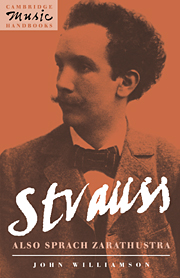Summary
Musical rhetoric is a venerable concept, which has been a marked feature of German music theory, partly as a legacy of the Baroque and Classical periods, partly as a result of the preoccupation with Musiksprache in more recent times. In English, ‘musical language’ as applied to individual composers has tended to be more a reflection of what Leonard G. Ratner describes as cohesive musical techniques, rather than the eloquence with which these are employed (thus in agreement with the rather controversial recent tendency to separate analysis and criticism). Yet if such factors as harmony, texture and counterpoint are taken as contributing to a kind of musical expression (which was Strauss's goal, however it be defined), then analysis of techniques and their eloquence as forms of expression (not as what is expressed) are closely interlinked. In this light, doubts about the waltz, for example, are often expressed in terms of musical eloquence, though it is arguable that they have fairly precise equivalents in the sphere of musical organization. This is surprising in that ‘Das Tanzlied’, by its transforming function and Zarathustrian symbolism, should be the unifying climax of the work, and Strauss's reputation as one of the great masters of the orchestral climax is secure. His timing of the successive waves of musical motion seems self-evident, whether in ‘Von der grossen Sehnsucht’, ‘Das Grablied’ or ‘Der Genesende’.
In this perhaps resides a clue as to how Strauss's structure should be viewed.
- Type
- Chapter
- Information
- Strauss: Also sprach Zarathustra , pp. 88 - 106Publisher: Cambridge University PressPrint publication year: 1993

